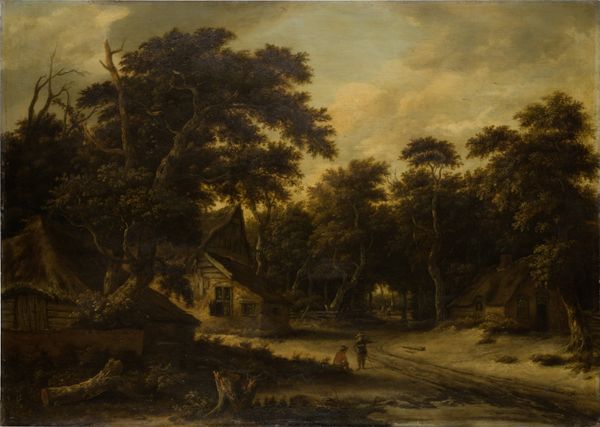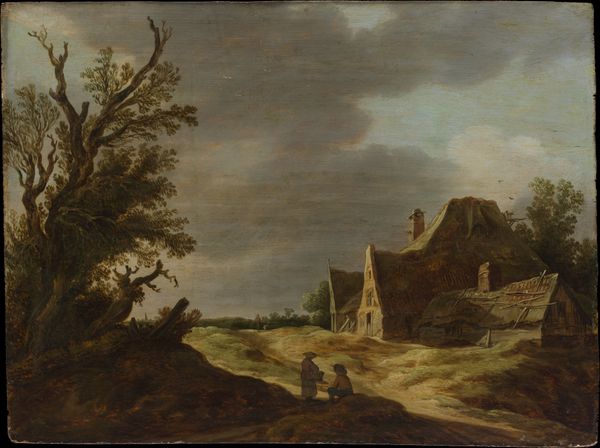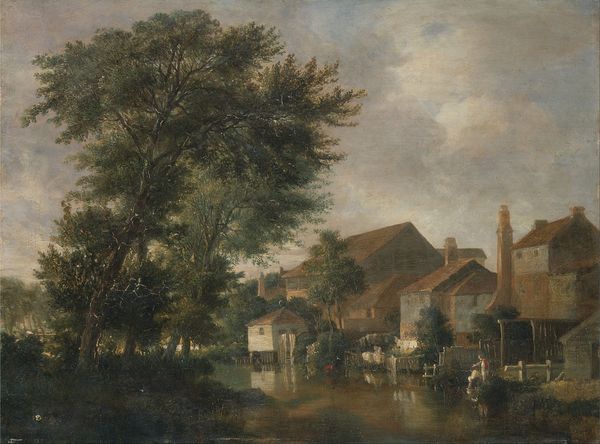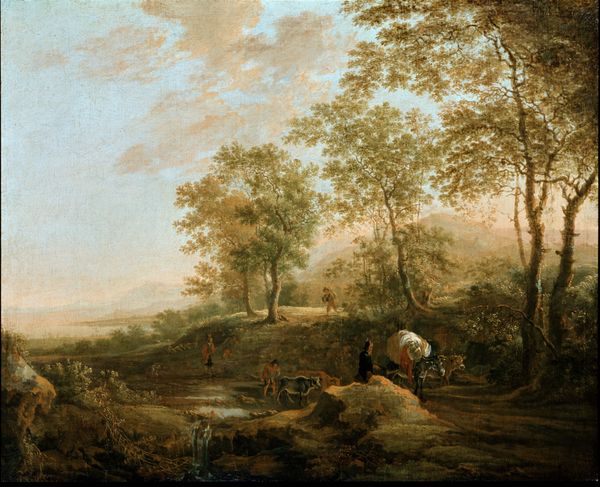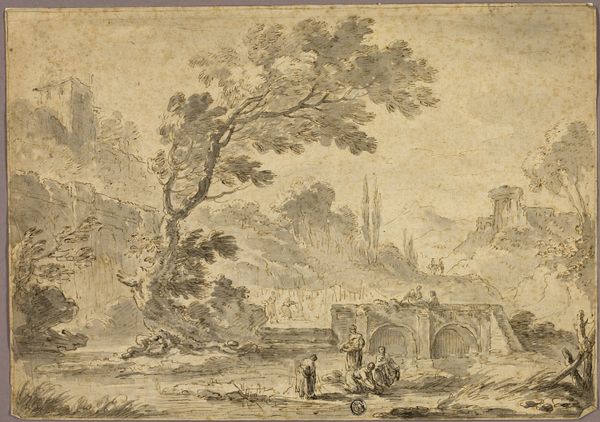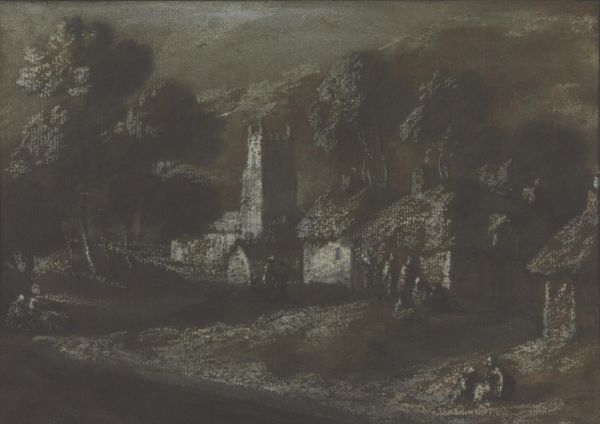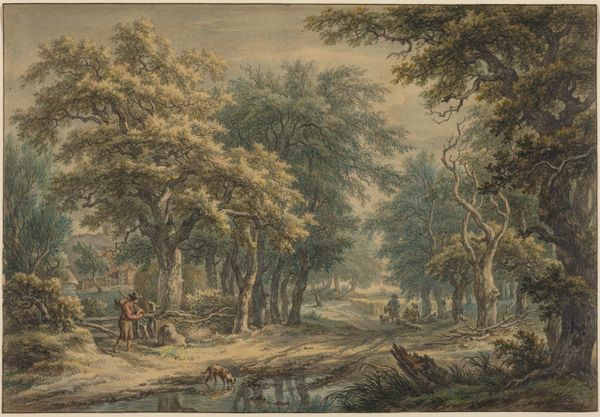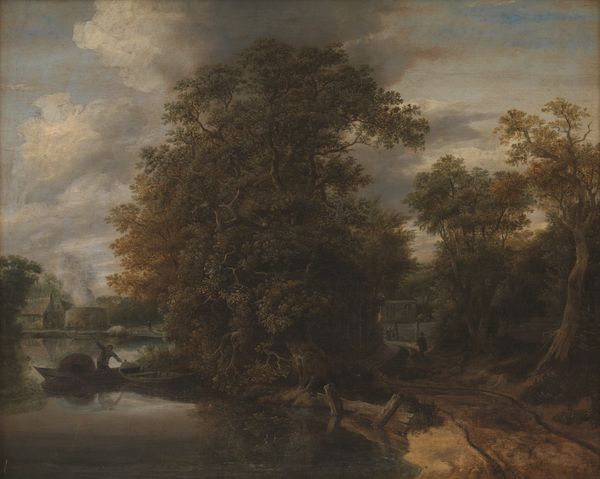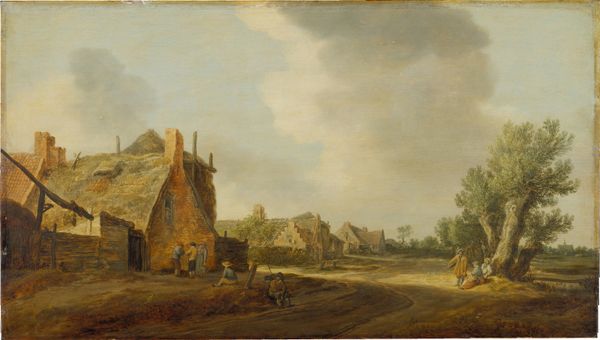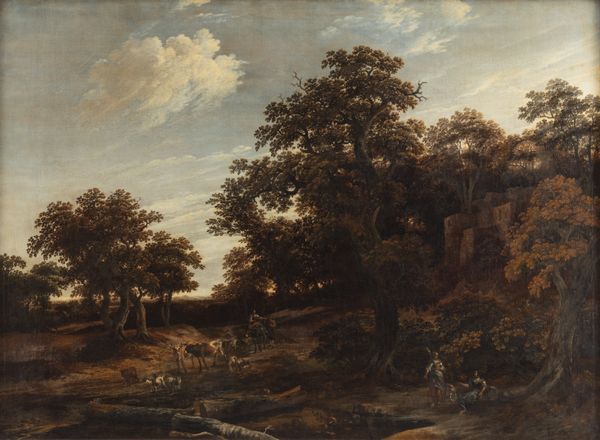
Dimensions: 435 × 559 mm
Copyright: Public Domain
Curator: This is "Wooded Landscape with Village Scene," attributed to Thomas Gainsborough, dating from after 1770. The work combines oil paint with what appears to be gouache on paper. Editor: My first impression is one of hushed tones, a kind of sepia-toned dreamscape. It evokes a profound stillness. Is it just me or is it just terribly depressing? Curator: Perhaps. Gainsborough’s technique, with its loose brushwork and muted palette, contributes to this atmosphere. Notice the layering of tones, how he builds depth not with precise detail, but with an almost atmospheric haze. He wants to construct pictorial space. Editor: Exactly, that pervasive "haze" shrouds everything! While artistically intriguing, its historical context is far from innocent, especially if we look at the rural populations it seeks to depict. We romanticize them, don’t we? But at what cost? What are they doing to sustain themselves and resist exploitation? This isn't innocent; it reflects the idealized fantasies of a leisure class. Curator: While that may be so, it’s the manipulation of light and shadow that is most captivating. The contrast creates visual interest and depth, especially where the eye moves upward toward the village steeple which becomes this dominating vertical form around the tree-lined perimeter. The whole landscape resolves into shape by these internal tensions. Editor: Dominating indeed! An imposing symbol of social hierarchy, if you ask me. And to your point on shape and construction—art historians often ignore class relations in favor of light. Why this focus on structure without understanding the painting’s function for the patron? Why celebrate the “art” of quiet oppression? Curator: Because the surface itself presents a nuanced system of tensions that can be observed across all romantic-era painting. This speaks to the very architecture of image-making. Editor: Maybe for now. But in deconstructing those images, remember to interrogate those systems in relation to those whom it omits. Curator: A sobering counterpoint that certainly warrants more than a passing consideration. Editor: Exactly. The work is artistically accomplished, undeniably. But those aesthetics also tell us stories of marginalization, ones we often conveniently choose to ignore.
Comments
No comments
Be the first to comment and join the conversation on the ultimate creative platform.
